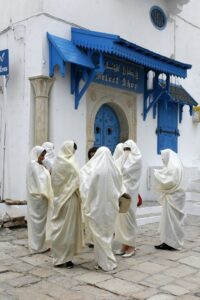Tunisian culture springs from a long eventful history, that shaped its established traditions and beliefs.
While the country is famous for a number of things notably for being an incredible touristic destination
with great views, delicious food, and an extensive array of five-star accommodations across the whole
country. Suffice it to say, Tunisia is fully kitted with all satisfactory entertainment amenities and luxurious
facilities.
Tunisia is also renowned for its cultural heritage and attractions. If you are looking to learn about the rich
history and civilities of Tunisian culture then you must schedule a visit on the 16th of March, The national day for traditional clothes.
A large festivity is held to honor the ways of the preceding generations. Delicious synonym food is served and people of all ages dress up in beautifully ornamented outfits.
Traditional clothes in Tunisia are widely acknowledged as the wearing of the elderly, but this notion has
long since been dissipated for now; vintage is fashion. Tunisian culture now spams a wide variety of
aspects in the effort of establishing a standing identity. Clothes are amongst the aspects most catered for.
1-Tunisian culture, chechia a national heritage
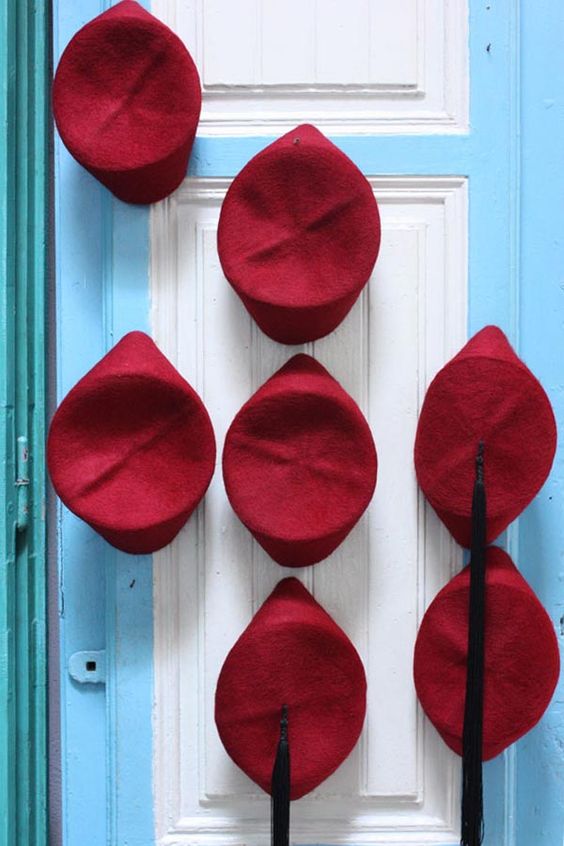
Formally worn by men, the red wool woven hat is associated with elegance and repose. Although, a wide
range of colors is usually offered, red is the designated color of chechia complying with the Tunisian flag
and often stands as a reference for patriotism and a sense of belonging.
The making of chechia is a very long and perilous process that requires patience and immaculate precision
to achieve optimal results. The first threads are knitted from combed wool and woven into circular shapes,
treated with hot water and detergent, and then further woven into their commonly known appearance.
The skill required to go through these steps is a well-preserved practice by the elderly who are regarded
as the best makers of chechia. But the secrets of this Tunisian culture staple are surely enough being
passed to the new generation.
2-Burnous, old is new
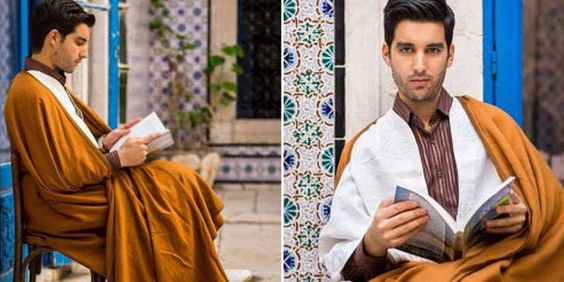
Another interesting piece of clothing is widely known and worn by Tunisian men. Similar to chechia,
the burnous is primarily made out of wool and resembles a long coat with a hood on top. This particular
set is favored in cold weather and the winter season for it offers warmth and cover.
Burnous is of Algerian origin, and while Tunisia has been keen to adopt this item, few derivatives have
emerged that seek to imbed it with the Tunisian culture style. The suing along the edges and long colors
are characteristics that have been added to signify uniqueness.
In modern times, burnous has become popular amongst the softer sex, embellished with sophisticated
kitting patterns and variated in catchy color, the burnous is very well established as a women dress fit for
many occasion.
3-Tunisian culture, Kaftan for modern women
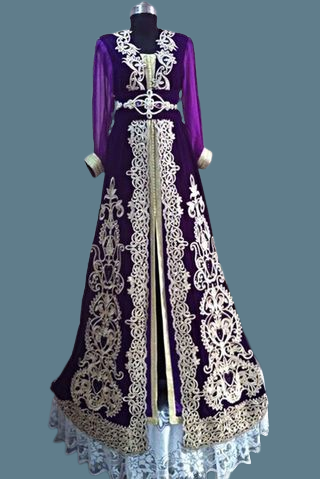
A dress of fine threads and intricate patterns with variation across Tunisia, Algeria, and Morocco.
However, furthering the efforts of national branding, Kaftan has been altered to suit Tunisian culture
standards.
The gown is strictly made for women, and while in the early ages, the kaftan was worn by ladies of upper
class, nowadays it is common between all social classes.
A modern twist has since been added to the kaftan to give it a refreshing look and a new flare coinciding
with fashion trends and today’s outfit standards. The dress is traditionally fabricated out of silk, but can
also be made out of different threads to accommodate the needs and tastes of different women.
A slew of accessories has also been introduced with the modern Kaftan to finish the look of elegance
and practicality. A headpiece, a small hand-poche, and or three-piece dress all culminate in a spectacular
outfit and a graceful look that reflects hints of Tunisian culture transcribed into a modern dress.
4-Tunisian culture, “Malya” vintage gown of the desert
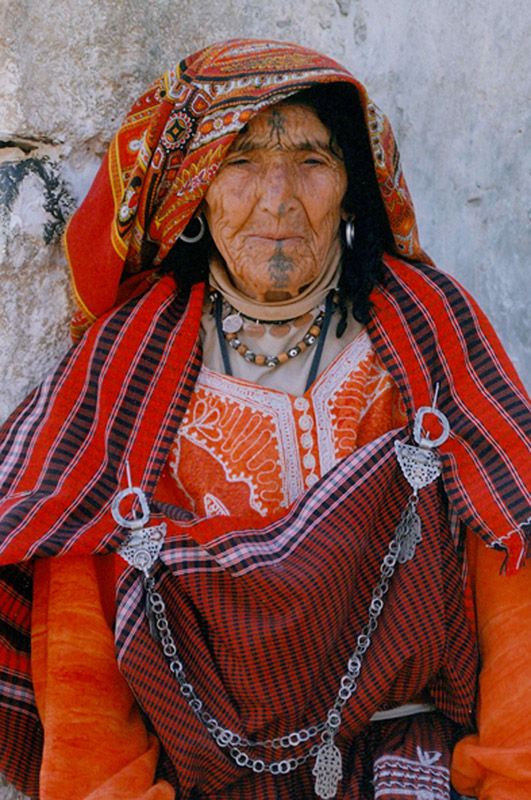
Well established as the traditional outfit especially in the southern states of Tunisia. The “Malya” is in essence a long cloak woven of wool typically worn by women. The dress is composed of two main pieces that make up the top and bottom halves.
Silver and gold ornaments can be added for extra appeal. Women often choose to boast a “Kholkhal” with
“Malya” as per tradition. The foot jewelry is a large golden ankle ring, embellished with craftsmanship. A silver necklace and long earrings are also fitted to compliment the look.
Unfortunately, the revolutionary efforts made to modernize traditional clothes fell short in this regard.
The “Malya” is still considered to be a dated outfit for the elderly, and while it is heavily associated with
Tunisian culture is often abandoned as a modern-day outfit.
Tunisia is a country of many secrets, while posing as a great entertainment front ideal for vacations and
special occasions, it is also a land of ancient history and deep-rooted cultural heritage.
If you are seeking to learn about the aspects of Tunisian culture, then fashion is a good starting point. The traditional clothes of Tunisia are indeed pleasant to inspect, usually made of fine threads, and have also been modernized to suit the emerging tastes.
All In all, Tunisia is just really never a disappointment to visit, so book your trip now and come discover the wonders of this amazing North African country now.
to learn more about the Tunisian culture, read the following blogs to grasp the full extent of the rich and exquisite history and traditions of Tunisia.
Roman Ruins: Discover the standing testament of ancient past

